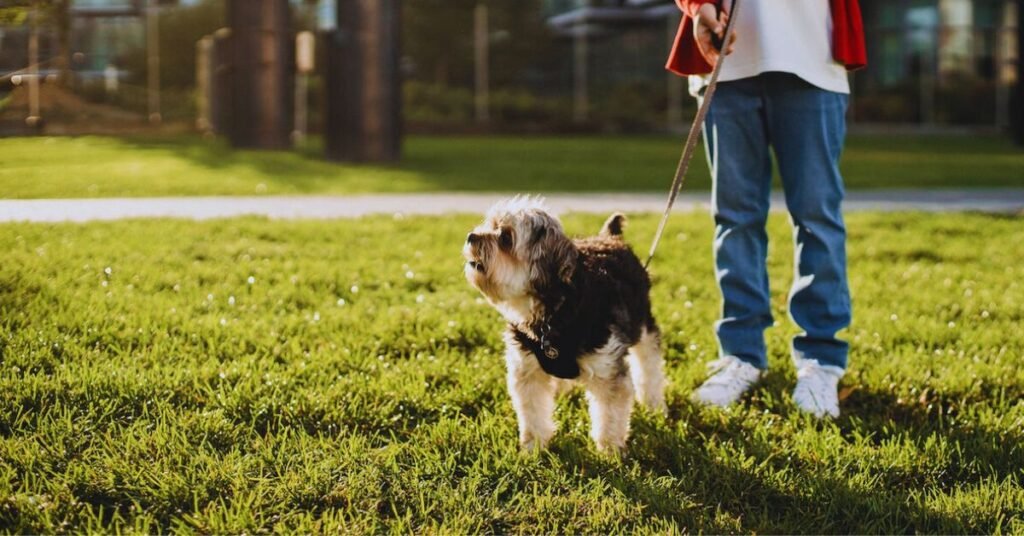Leash training a dog typically takes several weeks of consistent training. However, the exact duration can vary depending on factors such as the dog’s age, breed, temperament, and previous training experiences. With dedicated daily training sessions, it’s possible to see progress within a few days or weeks.
The key is to use positive reinforcement techniques, rewarding the dog for walking calmly on a leash and gradually increasing the duration and complexity of walks. Patience, consistency, and understanding the individual needs of your dog are crucial for successful leash training.
What is the Leash Training?
Leash training is the process of teaching your dog to walk calmly on a leash without pulling, dragging, or running ahead. This skill is essential for both your and your dog’s safety. It can also help prevent destructive behavior, as a well-trained dog is more likely to listen to your commands and behave appropriately in public.
Factors that Affect Leash Training
Several factors can affect the time it takes to leash train a dog. These include:
Age
Age is one of the most significant factors that affect leash training. Puppies are more receptive to training and can learn faster than older dogs. However, older dogs can also be trained; it may just take longer to break any bad habits they may have picked up over the years.
Breed
Different breeds have different personalities, temperaments, and energy levels, which can affect leash training. Some breeds, such as Labrador Retrievers, are known for their friendly and obedient nature, making them easier to train.
On the other hand, breeds like Beagles and Siberian Huskies are more independent and stubborn, making leash training a bit more challenging.
Personality and Temperament
A dog’s personality and temperament can also affect leash training. Some dogs are naturally calm and easy-going, making them more receptive to training. However, some dogs can be anxious or aggressive, making leash training more challenging.
Previous Training and Socialization
If your dog has had previous training and socialization, it may be more receptive to leash training. Dogs that have been exposed to different people, environments, and other dogs are more likely to be confident and well-behaved on a leash.
Consistency in Training
Consistency is crucial when it comes to leash training. You must be patient and consistent in your training efforts to achieve the desired results. Training your dog for a few minutes every day is more effective than training for an hour once a week.
Leash Training Methods
There are several methods you can use to leash train your dog, including:
Positive Reinforcement
Positive reinforcement involves rewarding your dog for good behavior. You can reward your dog with treats, praise, or toys when they walk calmly on the leash.
Clicker Training
Clicker training is a form of positive reinforcement that uses a clicker to signal to your dog that they have done something right. When your dog walks calmly on the leash, you click the clicker and then give it a treat.
Body Harness
A body harness is an alternative to a collar and leash. It distributes the pressure evenly across your dog’s body, making it more comfortable for them to walk on a leash. It also prevents any strain on your dog’s neck or throat, which can cause health problems in the long run.
How Long Does it Take to Leash Train a Dog?
The time it takes to leash train a dog varies depending on several factors, such as age, breed, and temperament. Generally, it takes between 2-6 weeks to leash train a dog. However, some dogs may take longer or shorter depending on their individual traits and circumstances.
Puppies typically take less time to leash train than older dogs because they are more receptive to training. If you start leash training your puppy at 8-10 weeks old, they should be comfortable walking on a leash by 16-20 weeks old.
However, older dogs may take longer to unlearn bad habits and develop new ones. It’s important to be patient and consistent in your training efforts, even if it takes longer than expected.
Tips for Successful Leash Training
Start With Short Training Sessions: Start by introducing your dog to the leash and collar and letting them wear it around the house for short periods. Gradually increase the time they wear it, and then move on to short training sessions outdoors.
Use Positive Reinforcement: Reward your dog with treats, praise, and toys when they walk calmly on the leash. This will encourage them to repeat the behavior.
Be consistent: Consistency is key when it comes to leash training. Train your dog for a few minutes every day rather than for long periods once a week.
Avoid Punishment: Punishing your dog for bad behavior can make leash training more difficult. Instead, focus on rewarding good behavior.
Use a Body Harness: A body harness is a comfortable alternative to a collar and leash. It distributes pressure evenly across your dog’s body, making it more comfortable for them to walk on a leash.
Be Patient: Leash training takes time and patience. Be patient with your dog and don’t expect them to learn everything in one training session.
Conclusion
Leash training is an essential skill that every dog owner should teach their pet. The time it takes to leash train a dog varies depending on several factors, such as age, breed, and temperament. However, with patience, consistency, and positive reinforcement, you can teach your dog to walk calmly on a leash without pulling or dragging.
